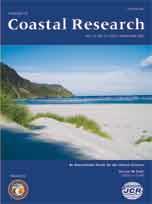A field experiment was conducted to investigate the fluctuations of the beach water table and surface temperature in the intertidal zone of a sandy beach. Both the temperature and beach water-table height were found to be influenced largely by the tide and beach morphology. A two-dimensional groundwater flow model was developed to examine the relationship between temperature, water-table height (depth), and tide and beach morphology. As the tide fell, the beach face drainage was controlled by the local beach slopes and the spatial patterns of the water-table behavior corresponded to the features of the beach profile. The results showed links between the beach water-table depth and surface temperature during the falling tide period, indicating the role of solar radiation in heating the exposed beach surface. These results may have important implications for studies on beach ecosystems, e.g., the interstitial fauna.
BioOne.org will be down briefly for maintenance on 14 May 2025 between 18:00-22:00 Pacific Time US. We apologize for any inconvenience.
How to translate text using browser tools
1 November 2006
Tide-Induced Variations in Surface Temperature and Water-Table Depth in the Intertidal Zone of a Sandy Beach
Ling Li,
Diane P. Horn,
Andrew J. Baird
ACCESS THE FULL ARTICLE
beach ecology
beach hydrology
beach processes modeling
beach surface temperature
Infrared imagining





